LVP is resistant to water, preventing damage from spills and wetness. It is also easier to repair than many other flooring options, saving time and money.
Both LVP and LVT are easy to maintain with regular sweeping and occasional damp mopping. They resist staining and are more durable than traditional hardwood floors, reducing the need for costly repairs or replacements. Contact Nashville LVP Flooring for professional help.
LVP is a cost-effective option for homeowners looking to achieve the look of natural materials like stone or hardwood without breaking the bank. This type of flooring has several advantages, including durability and versatility, and can be a smart choice for kitchens, bathrooms, or other high-traffic areas. It is also resistant to moisture and mildew, making it a healthier alternative to many other types of floors, especially in damp or humid environments.
Another advantage of LVP is its easy cleaning. The waterproof wear layer keeps dirt and grime from penetrating the planks, so they can easily be swept or mopped. This makes it an excellent choice for homes with children or pets, as spills can be quickly wiped up and won’t stain the surface. It’s also easier to clean than a texturized tile floor, as dirt won’t get stuck in the nooks and crannies of the texture.
In addition, LVP is available in a wide variety of styles, from standard printed vinyl to options that closely resemble wood or stone materials. These design choices allow you to create a unique style that complements your space and suits your tastes. Moreover, these floors are versatile enough to be installed in any room of the house.
However, some drawbacks of LVP include its off-gassing during installation and the fact that it may not be suitable for areas with moisture, such as basements. The off-gassing is caused by volatile organic compounds (VOCs) and can cause respiratory irritation or headaches. These issues can be mitigated by opting for a low-VOC or phthalate-free floor and allowing ample air flow to the room during installation.
Although you can install LVP yourself, it’s recommended to hire a professional to ensure that the job is completed correctly and efficiently. This will help you avoid costly mistakes and ensure that your new floor looks its best for years to come. In addition, a professional will have the right tools and expertise to handle challenging aspects of the project, such as uneven subfloors or intricate cutting for tight spaces. In addition, they will provide a warranty or guarantee that protects you from future problems.
Versatile
LVP is incredibly versatile and can complement almost any design aesthetic. It offers a number of design options, including wood looks that mimic traditional hardwood flooring but with the durability and affordability of vinyl. It also comes in a range of stone designs that can give a sleek, modern look to the living room.
One of the biggest benefits of LVP is that it is easier to install than other types of flooring, which can save you on installation costs. Typically, the planks connect with a click-lock system that makes it easy to DIY the project. LVP is also water-resistant, which means it can handle spills without absorbing them or becoming damaged.
Unlike natural wood, LVP doesn’t fade in sunlight and can be refinished to restore its appearance. However, you should still use throw rugs in sunny areas to minimize the impact of UV rays on the floor. In addition, you should choose a dark color for your floors to protect against fading.
Another advantage of LVP is that it’s available in a variety of colors, patterns, and textures. This versatility allows you to create unique spaces that reflect your personal style and taste. However, you should be aware that some brands may emit volatile organic compounds (VOCs) during the production process. This can cause discomfort and even irritate your nose and eyes.
While LVP is a good choice for most rooms, it’s best for high-traffic areas that will receive a lot of wear and tear. Its durable construction resists scratches, stains, and dents, making it an excellent option for homes with children and pets. It is also easy to maintain with regular sweeping, vacuuming, and mopping.
LVP is a great alternative to natural wood floors because it provides the same warmth and beauty but with increased durability and comfort. Additionally, it’s water resistant, which means it can withstand spills and other accidents that might damage hardwood floors. It also works well in kitchens and bathrooms, where a waterproof surface is essential. However, it’s not ideal for rooms with large temperature changes, as this can cause the floors to warp or buckle.
Durable
Unlike hardwood floors, which can be damaged by moisture, LVP is waterproof from the core. It also resists dents and scratches that can be caused by furniture or everyday wear. This durability makes it an excellent choice for homes with children and pets. The vinyl material is also soft underfoot, making it more comfortable than concrete or stone. Additionally, it is resistant to moisture and stains, making it easy to clean.
In addition to its durability, luxury vinyl flooring is often easier to install than traditional hardwood floors. Its click-lock and loose lay installation methods make it a good choice for DIY projects. Additionally, it is available in a variety of colors and styles, so you can easily find an option that matches your existing décor.
The durable construction of LVP is a result of its multiple layers. The core layer (often made of PVC or similar materials) adds strength and rigidity, while the image and wear layers protect the design from stains and scratches. The top image layer uses advanced printing technology to mimic the look of natural wood or other materials, allowing you to create an authentic hardwood floor at a lower cost.
While LVP is more affordable than hardwood, it can still be a splurge for many homeowners. However, with proper care and maintenance, LVP can last up to 20 years, making it a more cost-effective flooring option. In addition, if you have any damage to your LVP floors, they can be repaired or replaced quickly and affordably.
Like other types of vinyl flooring, LVP is made from petroleum-based products. This manufacturing process emits pollutants into the atmosphere and can cause environmental harm. It is important to purchase an environmentally friendly product, and to look for manufacturers with green certifications. In addition, you can reduce your environmental impact by using protective mats and rugs to help prevent dirt, dust, and debris from being tracked onto the floors. You should also regularly sweep and vacuum your floors, and wipe up spills and stains promptly. You should also keep your floors out of direct sunlight, which can cause them to fade and discolor.
Comfortable
LVP flooring is softer and warmer underfoot than other hard materials such as tile or stone. Its cushioned feel makes it a great choice for rooms with kids or pets, and it can even reduce noise. Some styles also feature built-in underlay, which further enhances the comfort and sound-absorbing properties of the floor.
This flooring material is water-resistant, making it easy to clean up spills and accidents. This feature is particularly useful in kitchens and bathrooms, where moisture can cause damage to other flooring types. However, the floor should still be protected from direct sunlight, as prolonged exposure can lead to discoloration over time.
In addition to being waterproof, LVP is highly durable and resistant to scratches and dents. It’s a good choice for families with children and pets, and its resistance to wear and tear makes it an excellent long-term investment. This flooring doesn’t require the periodic sanding and waxing that hardwood floors need, and regular sweeping and occasional mopping are usually enough to keep it looking clean and new.
LVP is also easier to install than laminate, and it can be cut with a utility knife or utility blade rather than a saw. It is usually also cheaper than wood and stone flooring, so it is an ideal option for budget-conscious homeowners.
Compared to laminate, vinyl composite flooring has more texture. This allows it to better mimic the look and even feel of real wood or stone, making it a more authentic alternative to these expensive options. Many people also find that it is a more comfortable choice, as it is often thicker and more cushioned underfoot than standard laminate flooring.
While LVP is a popular option for many homeowners, it is not without its drawbacks. Some disadvantages include its vulnerability to water damage, which may require special sealing treatments. It can also be damaged by heavy furniture, which should be moved carefully on the floor. It’s important to follow the manufacturer’s care and maintenance guidelines, as this will help you keep your flooring looking as good as possible for as long as you own it.



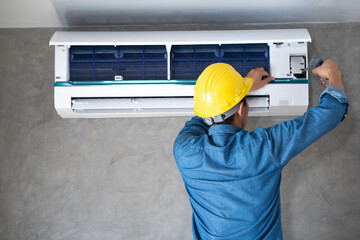
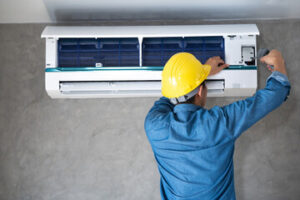
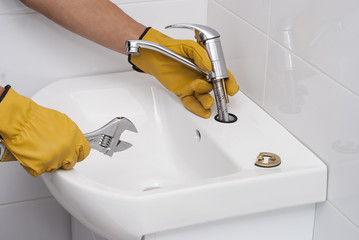
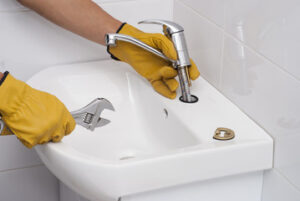
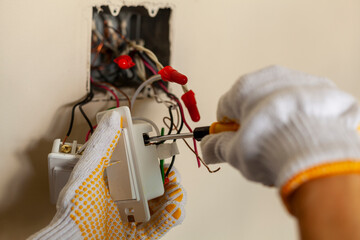
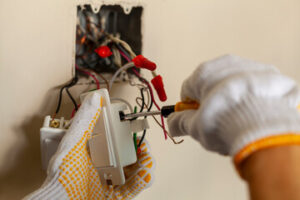 As the name implies, residential electricians work on electrical systems in homes and other buildings.
As the name implies, residential electricians work on electrical systems in homes and other buildings.